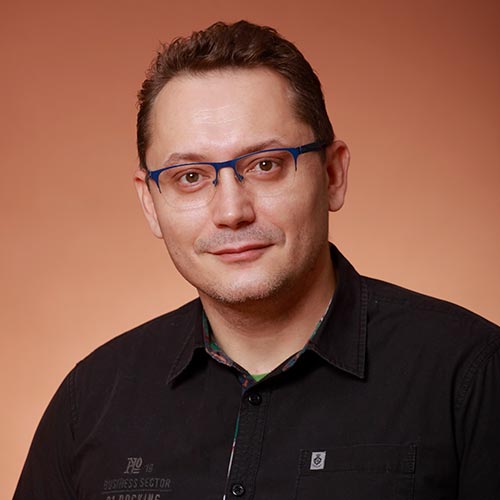Forestry I
ŠP5001 - obavezniOpterećenje: 45(P) + 0(L) + 30(A) + 0(PK) + 0(S) + 0(TJ) + 0(SJ) + 40(T)
Sadržaj predmeta: The content of the course includes four units: forest morphology, forest care, forest rejuvenation, basic economic forms of forests.
The first unit includes: the concept of forest cultivation; literature review; the meaning of forestry with regard to the economic, ecological and social benefits of forests; forestry and other scientific disciplines; approaches to forest cultivation; features and history of the "Zagreb School of Forestry"; place and role of forestry in forestry science and practice; the concept of forest; forest as a type of vegetation; distribution of forests; forest edge; forest border; forest production; the origin and dynamics of the forest; genesis and morphology of forest degradation forms; pioneer, transitional and final tree species; concept and elements of forest stand; horizontal and vertical structure of the forest stand; relations of trees in the stand; change of tree species in the stand; main and minor tree species; stand form; breeding form; development stages of the stand; dynamics of stand structure.
The second unit includes: the concept and goal of forest care; biological, ecological and forest management character of forest care; intraspecies and interspecies competition; biological relationships and natural excretion of trees during stand development; classification of trees in the stand; classification of silvicultural care procedures; care under the canopy; procedures with soil; procedures for the protection of the young generation; filling insufficiently rejuvenated surfaces; care of the young after the final cut; cleaning of the stand; methods of cleaning care, rationalization of cleaning care, impact of cleaning care; concept and purpose of thinning the stand; overview of thinning methods; thinning of stands in our country today - goals, intensity, volume, method and rotation of thinning; influence and effect of thinning; other forest care procedures; care in the selection stand; care in the tree stump; application of mechanization and chemical agents in forest care; planning, organization and implementation of forest care; performance of care by types of forest stands in the country.
The third unit includes: the concept of rejuvenation; types of rejuvenation; spring surface; the beginning and duration of natural rejuvenation; methods of natural rejuvenation; conditions for natural rejuvenation; habitat preparation; natural rejuvenation in the rainforest; ecology and biology of natural rejuvenation under the canopy and on the bare spring surface; natural rejuvenation by fertilization cuttings: description of the method, ecology of natural rejuvenation by fertilization cuttings, forms of fertilization cuttings, advantages and disadvantages; natural rejuvenation by selective logging: method description, ecology of natural rejuvenation by selective logging, forms of selective logging, advantages and disadvantages; natural rejuvenation by clear cutting: description of the method, ecology of natural rejuvenation by clear cutting, forms of clear cutting, advantages and disadvantages; natural rejuvenation by edge felling; vegetative rejuvenation: method description, biology and ecology of vegetative rejuvenation, advantages and disadvantages; review of combined rejuvenation methods; artificial rejuvenation: concept, features; sub-planting and pre-planting; method of rejuvenation by types of forest stands in our country.
The fourth unit includes: the goal of forest management; forestry planning; concepts of simple and extended biological reproduction; high forest, low forest, medium forest, regular management; selective management; revitalization of degrading forest forms; silvicultural procedures in special purpose forests; substitution of stand form; conversion of breeding forms; conversion of degradation forms into cultivation forms.
During the exercises, the following thematic units are analyzed or practiced practically: tree morphogenesis; description of the forest stand; structure of forest stands; comparative analysis of the structure of a single-season and selective stand; classification of trees in the stand; care procedures in stands of high and low growing forms; remittance in fertile cuttings and selective management; silvicultural characteristics of forest stands in Croatia.
The following topics are analyzed and practiced at the field lesson: I - natural and artificial rejuvenation of stands under the canopy of crowning old trees with fertile cuttings (preparatory, fertile and final cuts - goal, intensity, method of implementation), spring period, fertile period, general and special spring period, young and young (descriptions of developmental stages), care of young under the canopy of old trees, care of young after complete felling, cleaning care, habitat preparation, amount of seeds/seedlings for artificial renewal of the stand, mixture ratio. II - dynamics of Mediterranean forests, stands of holm oak and black ash (habitat, structure, care, rejuvenation), degradation forms of holm oak forests (makija, garig, stone grove - description, origin, silvicultural procedures), degradation stages of medunca oak forests (scrub, brushwood, rockery - description, origin, silvicultural procedures), silvicultural procedures in holm oak/honey oak stands (care by trimming, cleaning, thinning, rejuvenation), middle forest (description and method of management), conversion of the stand into a higher growing form with care and rejuvenation , pioneer tree species and their role, stands of Aleppo/black pine (care, restoration, substitution of stand form). III - morphology and structure of selective stands with stable structure, morphology and structure of selective stands with group structure, features of selective management, natural rejuvenation under the cover of crowning of old trees by selective cutting, normality and its role in selective management, selection of trees for felling and intensity of selective cutting.
Literatura:Obavezna literatura:
1. Anić, I., M. Oršanić, 2004: Uzgajanje šuma I. Skripta za internu uporabu, Zavod za uzgajanje šuma, Šumarski fakultet, Zagreb.
2. Anić, I., M. Oršanić, S. Mikac, D. Drvodelić, 2004: Uzgajanje šuma I ? vježbe i terenska nastava. Skripta za internu uporabu, Zavod za uzgajanje šuma, Šumarski fakultet, Zagreb.
Preporučena literatura:
3. Matić, S., 1996: Uzgojni radovi na obnovi i njezi sastojina hrasta lužnjaka. U: D. Klepac (ur.), Hrast lužnjak (Quercus robur L.) u Hrvatskoj, HAZU i Hrvatske šume p.o. Zagreb, 167 - 212, Zagreb.
4. Matić, S., 1994: Šume visokih gora i planina dinarskog područja. U: Đ. Rauš (ur.), Silvae nostrae Croatiae, Ministarstvo poljoprivrede i šumarstva Republike Hrvatske, 145 - 153, Zagreb.
5. Matić, S., 1991: Njega šuma proredom. Šumarski fakultet, 45 str., Zagreb.
6. Matić, S., J. Skenderović, 1992: Uzgajanje šuma. U: Đ. Rauš (ur.), Šume u Hrvatskoj, Šumarski fakutet Zagreb & Hrvatske šume p. o. Zagreb, 81 - 97.
7. Matić, S., M. Harapin, 1986: Uzgajanje i zaštita šuma. Savez inženjera i tehničara šumarstva i drvne industrije, 177 - 194, Zagreb
Nositelji
Suradnici








